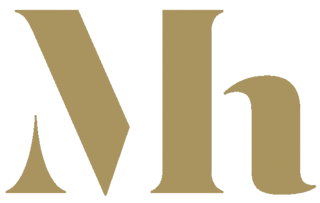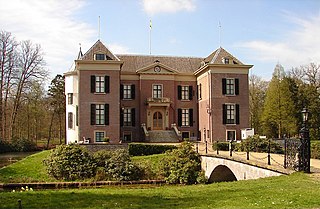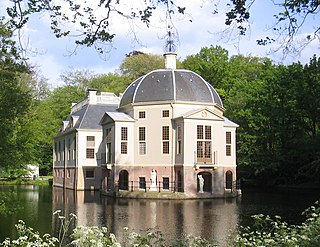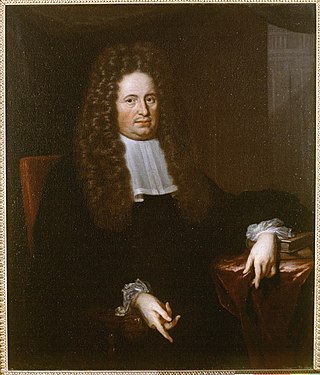
Beeckestijn is a historical buitenplaats (summer house) dating from the 18th century in a park by the same name in Velsen-Zuid, Netherlands.

Beeckestijn is a historical buitenplaats (summer house) dating from the 18th century in a park by the same name in Velsen-Zuid, Netherlands.

The Beeckestijn site was a buitenplaats in the 15th and 16th centuries before the current English-style garden was designed in the 18th century. The house and the accompanying gardens are listed for varying reasons in the National register of monuments. The original design of the current garden plan from 1772 was preserved in an engraving by the landscape designer Johann Georg Michael (1738-1800), who also designed the neighboring park Waterland. He was assisted by the painter and designer Johann Heinrich Müntz. They were commissioned by the owner Jacob Boreel who had visited England and wished for a garden in the style of Stowe, Kewe Gardens and Wimpole. The gardens were partially redesigned in 1936 by the landscape designer Leonard Springer (1855-1940). Throughout the park are three bunkers from World War II that were sunk after the war by pumping the sand beneath them away. One of these bunkers is below the shell pond near the rear of the house.
The house had various owners until being bought by the Trip family in the 17th century. Jan Trip the younger expanded the house to its present state in 1716-1721. The main building seen today has a sculpture on the facade and some stuccos within by Ignatius van Logteren (1685-1732). [1] The house was occupied as a residence until 1924 when it fell into disuse. In 1939 it was used by a Dutch regiment who caused a lot of damage, and in 1941 it was occupied by German infantry. In 1942 the three Atlantikwall bunkers were built in the garden. After the war the house was occupied by Canadians before becoming the property of Jonkvrouwe Agnes Cremer-Boreel who sold it to Velsen. The restoration was completed in 1969 and the property opened as a museum, with a yearly garden festival and a yearly pop festival taking place there.
In 2006 the museum with rooms in the style of the owner Jacob Boreel was closed. The property now belongs to the Vereniging Hendrick de Keyser, which restores and manages other heritage sites in the area. Beeckestijn is due to reopen as a museum of landscape, due to its importance as a relic of Dutch garden history, as well as its role in the nearby water management history (the house was originally on the Wijkermeer).

The Mauritshuis is an art museum in The Hague, Netherlands. The museum houses the Royal Cabinet of Paintings which consists of 854 objects, mostly Dutch Golden Age paintings. The collection contains works by Johannes Vermeer, Rembrandt van Rijn, Jan Steen, Paulus Potter, Frans Hals, Jacob van Ruisdael, Hans Holbein the Younger, and others. Originally, the 17th-century building was the residence of Count John Maurice of Nassau. The building is now the property of the government of the Netherlands and is listed in the top 100 Dutch heritage sites.

Huis Doorn is a manor house and national museum in the town of Doorn in the Netherlands. The residence has early 20th-century interiors from the time when former German Emperor Wilhelm II resided there (1919–1941).

Villa Welgelegen is a historical building in Haarlem, the Netherlands, which currently houses the offices of the provincial executives of North Holland. Located at the north end of a public park in the city, it is an example of neoclassical architecture, designed by Abraham van der Hart and unusual for its style in the Netherlands.

A buitenplaats was a summer residence for rich townspeople in the Netherlands. During the Dutch Golden Age of the 17th century, many traders and city administrators in Dutch towns became very wealthy. Many of them bought country estates, at first mainly to collect rents, however soon mansions started to be built there, which were used only during the summer.

The Zuiderkerk is a 17th-century Protestant church in the Nieuwmarkt area of Amsterdam, the capital of the Netherlands. The church played an important part in the life of Rembrandt and was the subject of a painting by Claude Monet.

The Noorderkerk is a 17th-century Protestant church in Amsterdam, The Netherlands. The Noorderkerk is located along Prinsengracht canal, on Noordermarkt square. The church is used for Dutch Reformed Church services and is also used regularly for classical music concerts.

Hartekamp, or Hartecamp, is the name of a villa in Heemstede, North Holland, the Netherlands, on the Bennebroek border. It was once the Buitenplaats of George Clifford, who employed Carl Linnaeus in 1737 to write his Hortus Cliffortianus, a detailed description of the gardens of Hartecamp.

Jacob Boreel was a dutch ambassador in France, sheriff and burgomaster of Amsterdam in 1696. He Held the titles knight and Vrijheer of Duinbeek, Westhoven, Sint Aecht und Meerestein.

The Oost-Indisch Huis is an early 17th-century building in the centre of Amsterdam. It was the headquarters of the Amsterdam chamber of the Dutch East India Company. It is a listed Dutch national heritage site (rijksmonument).

The Koninklijke Hollandsche Maatschappij der Wetenschappen, located on the east side of the Spaarne in downtown Haarlem, Netherlands, was established in 1752 and is the oldest society for the sciences in the country. The society has been housed in its present location, called Hodshon Huis, since 1841. Nearby the society is the Teylers Museum, a closely related museum of natural history founded in 1784. In 2002, the society was awarded the predicate "Royal" when it celebrated 250 years of science studies.

The City Hall in Delft is a Renaissance style building on the Markt across from the Nieuwe Kerk. It is the seat of the city's government as well as a popular venue for civic wedding ceremonies. Most administrative functions have been transferred to an office inside the Delft railway station building. Originally designed by the Dutch architect Hendrick de Keyser, it was heavily changed over the centuries and was restored in the 20th century to its Renaissance appearance.

Elswout is a historical buitenplaats dating from the 19th century in a park by the same name in Overveen, Netherlands.

Gunterstein Castle is a castle in Breukelen, on the river Vecht, that was the former home of the rich Dutch widow Magdalena Poulle (1626–1699). She bought the property and associated title after the former castle and stronghold was destroyed by the French in the Disaster Year Rampjaar 1672.

The Makelaers Comptoir or Makelaarskantoor, the "brokers' office", is a 17th-century guildhall in Amsterdam, at the corner of Nieuwezijds Voorburgwal and the alley Nieuwe Nieuwstraat. It is one of the few remaining guildhalls in Amsterdam.

The Wijnkopersgildehuis is a former guildhall in Amsterdam. The 17th-century double house is located at Koestraat 10–12, near Nieuwmarkt square. It is one of the few remaining guildhalls in Amsterdam and has the oldest known neck-gables. The building has rijksmonument status.

Den Aalshorst is a country house in the hamlet of Millingen in the municipality of Dalfsen in the Dutch province of Overijssel. The 450-hectare property is privately owned, but completely open to the public. It features an open landscape interspersed with 150 hectares of deciduous forest. As of 2007, the property was owned by 'N.V. den Aalshorst'.

Middachten Castle is a monumental manor house, located on the Middachten estate, De Steeg, Netherlands. The current building dates from 1693-1698. The castle is a rijksmonument since October 11, 2004, and is part of the Top 100 Dutch heritage sites.

The House with the Heads is a large canal house on the Keizersgracht 123 in Amsterdam, named after the six ornaments shaped as heads, which are on the façade. The house is a rijksmonument and is listed on the Top 100 Dutch heritage sites.

Twickel is a protected historic country estate with 81 complex parts near Delden in the hamlet of Deldeneresch, in the municipality of Hof van Twente in the province of Overijssel in The Netherlands. The moated castle forms the center.

Duin en Kruidberg is a stately home in Santpoort, near Haarlem, the Netherlands. Kruidberg started as a summer house for rich merchants from Amsterdam, then it became a hunting lodge of the prince of Orange, the future king-stadholder, William III (1650–1702). The plans for the Dutch invasion of England were drawn up here, which culminated in the Glorious Revolution of 1688. The estate merged with neighbouring Duin en Berg into Duin en Kruidberg in the 19th century. The current house was constructed by Jacob Theodoor Cremer around 1900 in Dutch Renaissance Revival architecture. The Cremers hosted royalty at the house and held hunting events as well. It was and is one of the largest country houses in the Netherlands. After the Second World War, it became a holiday resort for the employees of a large Dutch bank, ABN AMRO. Later, it was opened for the general public as well.